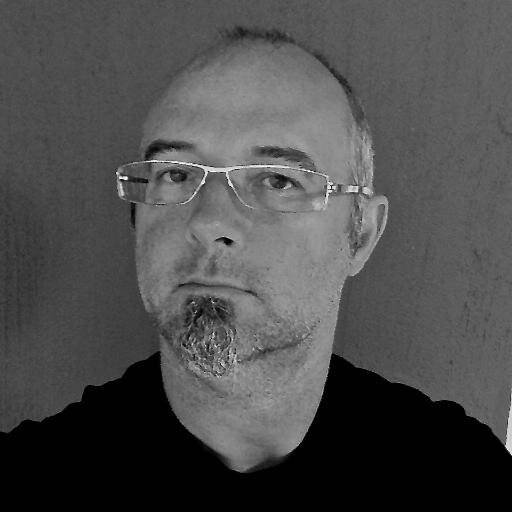“When we discovered Enscape it changed our world!”
Craig Krawczyk | Principal | LIVE Design Group
Who’s Craig?
I have a bachelors degree in Architecture from Auburn University (1997). I’m a Principal and lead design architect at LIVE Design Group in Birmingham, Alabama. I’ve been with the company nearly 17 years and I’ve been working with Autodesk Revit since 2006 and Enscape since since the spring of 2016.

My primary focus has been to develop strategies and workflows in order to maximize the ability of BIM to create efficient and compelling design solutions. And when I’m not being an architect I’m a dad raising three daughters in Birmingham.
Twitter: https://twitter.com/Craig_Krawczyk
LinkedIn: https://www.linkedin.com/in/craigkrawczyk
Why Enscape?
LIVE Design Group is a commercial architecture and interior design firm that was founded in 1987. We have a great deal of experience with projects of various typologies, sizes and complexities. Our specialties are assembly space design, such as contemporary worship centers, fine art theaters, gymnasiums, auditoriums and arenas.

Our LIVE design process is highly unique. We are less focused on the building and more on the process that creates a very client and service oriented methodology. We believe the earlier we can engage our clients, the better the outcome. Before our present process, we noticed the client was often confused by many rejected options and functions that can’t be understood within a specific design proposal. We discovered the client was confused because they were not part of the design process. We ultimately created the LIVE design process to give context and understanding to the client about the resulting design by deeply involving the client in the design process.
During our LIVE design sessions, we are modifying the design in real-time and
immediately validating the results with the client.
Craig Krawczyk
Our LIVE design methodology allows us to collaborate and design live, with the client in the room along with the project team. This typically occurs with the client and other project stakeholders over a 1-2 day concentrated effort. During our LIVE design sessions, we are modifying the design in real-time and immediately validating the results with the client. Our process has evolved over the last 20 years from a highly analog to a completely digital workflow.

Overall, our LIVE design process is approached more like improvisational theater! Everything is tested in the model and everything is tried. The wonderful thing about this process is that it is far more successful and far less adversarial than your typical design development process that is hidden from the client. As the design program is being sculpted in 3-D blocks, we begin to pull building components from a vocabulary and vernacular that identifies and resonates with the client. Contractors in attendance will begin to immediately pull data from the schematic design.
We need to help the client accurately visualize the finished product.
Craig Krawczyk
But our biggest challenge has been that Revit can be too “cartoony”, which doesn’t help the client accurately visualize the finished product. We needed lighting and shadow to really communicate and understand the spaces. Texture and material is also very important to our workshop process. The client would say they understood the building, but we really needed to help them explore the space and explore movement through the building to fully understand how the spaces will feel and function. Even though our early design studies are typically devoid of materials, the quality of light and shadow is exactly what we need.

Navigation in Revit isn’t ideal for our needs. We could drop in perspective cameras and orbit around the space. But visualization isn’t smooth and realistic. At best, we could take the project into a third-party application for rendering shaded shadow still images – but the workflow isn’t efficient. Anything less than real-time in real-time fails – whether you’re waiting for a rendering on the desktop or the cloud. Suffice to say, Enscape has completely revolutionized our process. There is a depth and quality in Enscape that you can’t get from any other application.
Enscape has completely revolutionized our process.
There is a depth and quality in Enscape that you
can’t get from any other application.
Craig Krawczyk
The beauty of Enscape is that it doesn’t feel like a separate application from Revit. The results are beautiful and easy to navigate. As we make changes in Revit the Enscape environment updates automatically. We can modify the design in Revit and make other changes and Enscape updates without exporting. The navigation quality in Enscape is very responsive. Even when there’s no lights or materials in the project, Enscape is far superior without leaving Revit.

As you can imagine, a LIVE design process can be incredibly stressful – but it is also incredibly rewarding. I have never experienced the kind of rewarding, design feedback than I have received when collaborating with a client in the moment. It’s absolutely wonderful. At the end of the second day the client is literally high-fiving you and exclaiming, “I can’t believe what we have accomplished in two days”. Using Enscape, the client is far more engaged, far more excited and the process is far more satisfying. One client recently told us, “I don’t know why we do this any other way.” And we’ve got a client for life.

Thanks!
Glad to discuss how Enscape has dramatically improved our design process. When I say that “Enscape changed our world” it’s not an exaggeration!

Phil Read – Read|Thomas – Author
LinkedIn – www.linkedin.com/in/readphil
Read|Thomas – www.readthomas.com
hello@readthomas.com
